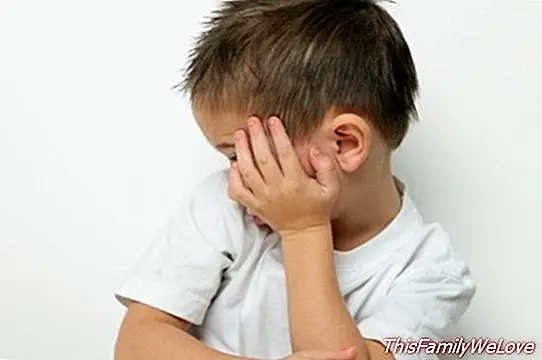Autism in children


Autism in children is a developmental disorder that is characterized by an alteration in the ability to communicate, by difficulties in social relationships and by showing a pattern of repetitive and stereotyped behavior.Worldwide, 3 to 6 of every 1,000 children have autism, a disorder that affects men more than women.
Autism disorders in children are neuropsychiatric disorders with a wide variety of clinical alterations that affect patients in different ways.
Pervasive developmental disorders (PDD), among which autism is found, are characterized by Those affected have difficulties to develop in various areas: communication (verbal and non-verbal), social interaction, and the realization of activities, which is limited in number and has a repetitive and monotonous pattern.
The diagnosis of autism
The diagnosis of autistic disorder serves to rule out other pathologies such as schizophrenia or hearing disorders. It consists of different cognitive and language tests, as well as a detailed neurological evaluation. Depending on the degree of involvement and the skills involved, these patients can be diagnosed with one type or another of autistic spectrum disorder. Thus, children with autistic symptoms but with well-structured and developed language skills are usually diagnosed with "Asperger Syndrome", whereas if they have a marked set of autistic symptoms, but not enough to conform classic autism, usually makes a diagnosis of "Generalized developmental disorder not specified".
The diagnosis of autism in children is established according to different symptoms such as the degree of language development, the age at which the first symptoms appeared and the severity of the disorder. There are no specific medical tests that determine which autism spectrum disorder is involved. The diagnosis of autism in children is based on observation of clinical manifestations and interviews with the patient and his family.
Symptoms of autism by age
Symptoms of autism in the first twelve months of the baby
- The maternal face does not interest or offer any response.
- He does not react to his mother's embrace.
- Does not smile beyond 4 months of life.
- The samples of happiness are not justified before social events.
- Presents a long-term unjustified crying.
- He does not respond when they call him by his name.
- You can not differentiate your family members.
- It lacks social interest.
- Little interest in the environment.
- Does not attract attention and can stay too long in the crib.
- It is indifferent to the stimuli like to the game and to the carantoñas.
Symptoms of autism in the second and third year of the child
- Lacks emotional responses to their parents, grandparents, brothers *
- Crying without control or apparent cause
- Fear of noise.
- He does not play with objects.
- Delay in the acquisition of personal hygiene habits.
- Absent or deficient toilet control.
- Absence of verbal communication.
- Absence of visual contact.
- Presence of stereotyped repetitive movements (automecerse, hitting the head, flapping hands).
- It does not present a painful response.
Symptoms of autism in childhood
- Compulsive tendency to the order of objects.
- Absence of communication of experiences and self-experiences.
- Scarce verbal communication and repetitive and unusual type.
- It shows the distinctive features of previous stages and tend to accentuate.
- You can not dress alone.
- Does not relate or play with other children.
- Has outbursts against himself or against the environment of high intensity and without apparent cause.
Symptoms of autism in adolescence and in adulthood
- They are similar to those of mental retardation because they depend on other actors such as:
- Language: they have difficulty expressing needs, which can cause frustration and other emotional disturbances.
- Self-help habits: for personal hygiene, food, clothing ... they need help. Only through early training can the subject achieve that independence of execution.
Marisol Nuevo Espín




